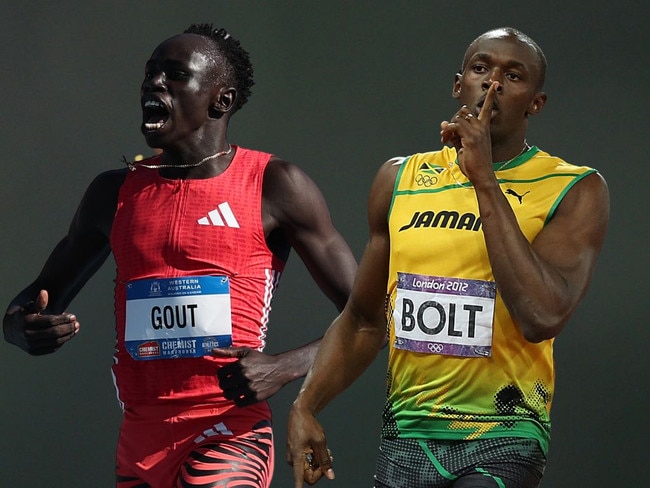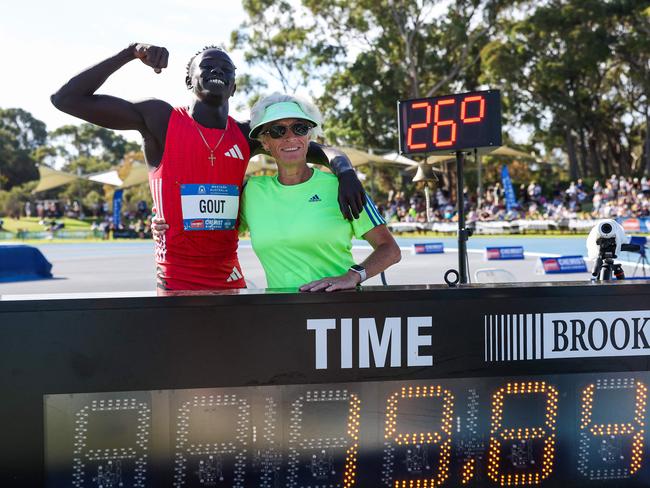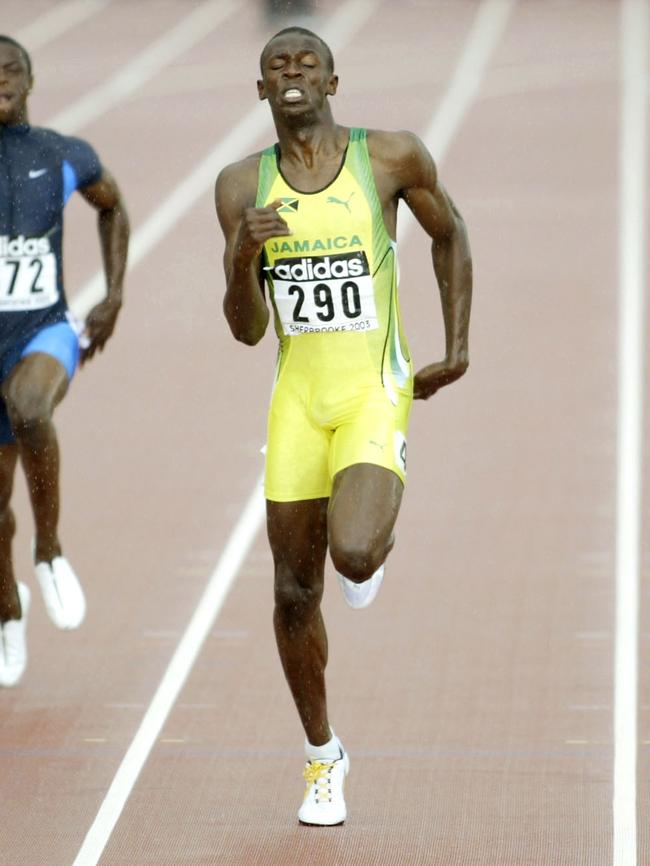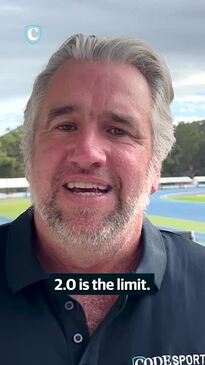‘Never seen anything like it’: Stunning data reveals Gout Gout’s uncanny correlation with Usain Bolt
Science can now answer why Gout Gout looks so similar to the world’s greatest ever sprinter, with the Stawell Gift next on the agenda for the Aussie sprint sensation.

He looks like Usain Bolt when he runs and now there is data which reveals the stunning comparison between Gout Gout and the world’s greatest ever sprinter.
Bolt, the world record holder for the 100m and 200m, has already commented on the similarities with the Australian teenager and now a leading biomechanist and movement scientist has unlocked the reason.
Dr Dylan Hicks, from Flinders University, has used performance analysis software on Gout’s two wind-assisted sub-20sec races over 200m – his 19.98sec run at the Queensland championships and last Sunday’s 19.84sec at the Australian Championships.

The data showed in the 19.84sec race that Gout increased his average step length in the final 100m from 2.60m to 2.69m, peaking at an extraordinary 2.86m – equal to the maximum step length recorded by Usain Bolt during his 100m world record in Berlin in 2009.
Gout also improved his speed in the first 100m – going from 9.37 metres per second (which took him 10.67sec) in the Brisbane race last month to 9.59 m/s (10.43sec) in Perth.

This combined with his elite ability to maintain speed over the full distance resulted in the extraordinary time.
So if Gout has the same stride length as Bolt at the age of 17, what will he be able to do when he matures as a sprinter?
Hicks said he’d received a lot of feedback about his findings including from a leading sprint coach from Sweden who said in his 50 years of coaching he’d “never seen anything like it”.


But what has the scientists shaking their heads is how Gout generates the power off the track when he’s not overly tall – 182cm to Bolt’s 195cm – and has minimal muscle mass – 66kg to Bolt’s 94kg – compared to the traditional sprinters.
“I think what is most interesting is just the way he is generating it,” Hicks said. “You think of the traditional sprinters like Yohan Blake, Matt Shrivington or a Ben Johnson where you know it is fairly muscle driven.
“He (Gout) doesn’t have any mass on him. It’s not like how you see some of those youth athletes who you know have been heavily trained in the weightroom, we are not seeing that.
“That’s the difference because that clearly hasn’t happened, the mechanism of how he has generated the speed is just different to what we have seen before.”
Gout’s immediate challenge this weekend is to transfer this extraordinary stride and speed on to the grass track at Central Park, Stawell, for Australia’s richest footrace.
History is against the Queensland schoolboy, who will run off the 1m mark, given it has been the outmarkers who have taken home the $40,000 winner’s cheque in recent years.
Since 2005 when Josh Ross won his second Gift off scratch the shortest handicap to salute has been Ryan Tarrant off 3.75m in 2023.
But according to 1993 Stawell Gift winner Jason Richardson, Gout and fellow rising sprint star, Lachlan Kennedy (0.25m), are legitimate chances to change that trend.

“He (Gout) can win,” Richardson said. “He has trained a lot on grass at Ipswich which is one big positive.
“And I go back to the historical context, Steve Brimacombe and Dean Capobianco ran 12.18 and 12.19 off scratch and Eddie Nketia was second off scratch (in 2022). He (Gout) has got 1m and he is every bit as good as them and significantly better than Eddie.
“So on historical context alone, unless we have an outlier off an inflated mark or a precocious young talent who smashes the clock then I can’t see a scenario where Gout, and also Lachie Kennedy, aren’t right in the final.”
Some of the best sprinters in history have made the trek to Stawell with mixed results including former world 100m record holder Asafa Powell, Olympic champion Linford Christie, former world 100m champion Kim Collins and American sprint star Jon Drummond.





